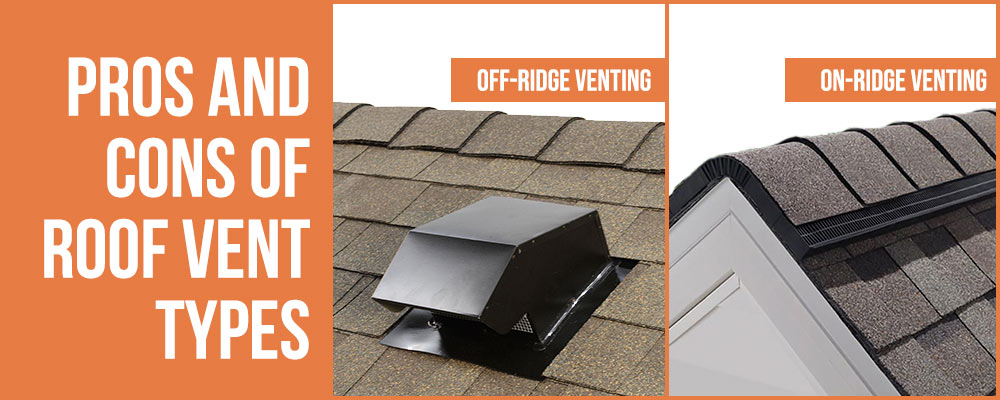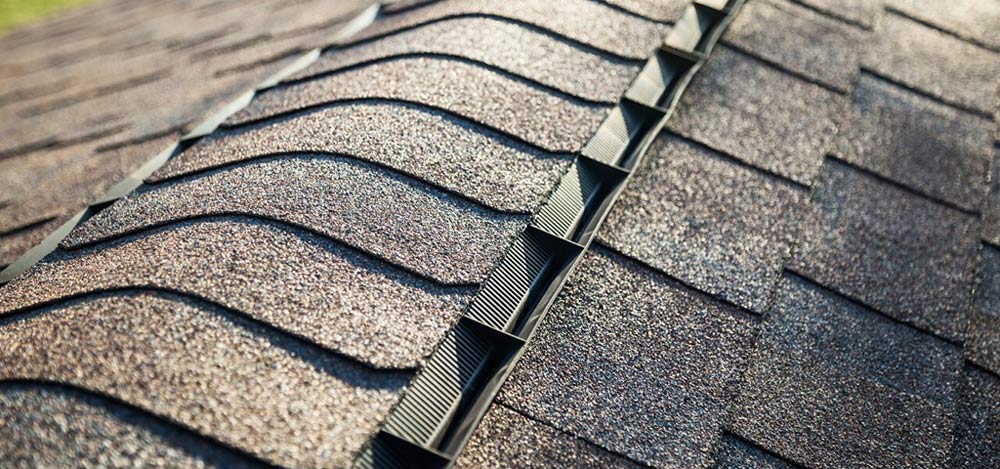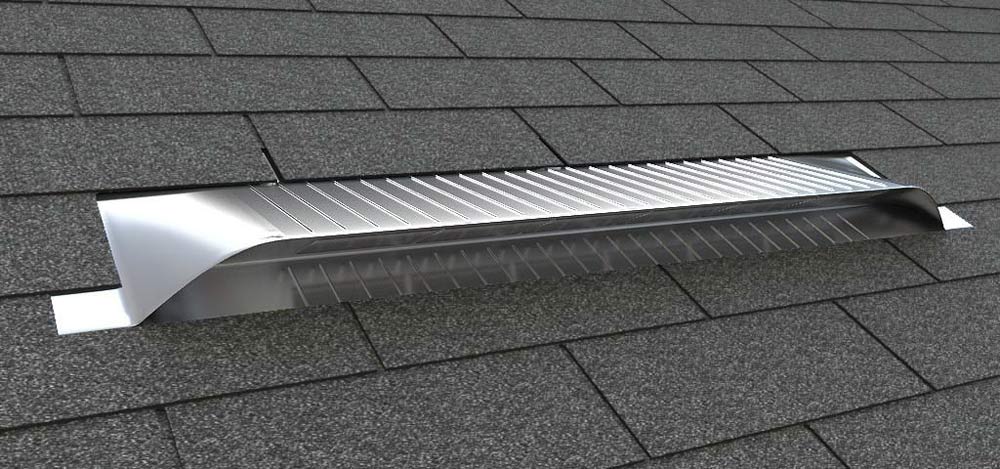Pros and Cons of Off-Ridge and On-Ridge Venting
Published: 06/28/2021

Roof venting is a critical part of a building’s structure, especially in the often-scorching climate of Sarasota and Bradenton. With humidity and heat in ample supply, it’s easy for attic conditions to get muggy – fast. All of that warm, moist air collects beneath the roof, and if there are no vents in place, it has no way to escape. This overheats the building’s interior and increases the risk of mold growth. Unfortunately, you can’t just install any old roof vents and call it a day. The type of vents required can vary depending on a building’s conditions and the desired effects. For this reason, we’ll go over the two primary types of venting and discuss the pros and cons.
On-Ridge Venting

On-ridge venting is placed directly on the top ridge line of a roof. The logic behind this placement is that warm air rises, so placing a vent at an attic’s highest point will mean that the air naturally gets pushed out. It seems like a simple, common-sense theory, which is why on-ridge venting is the most commonly used type by roofing contractors.
Unfortunately, it isn’t so simple. On-ridge vents that are installed without proper baffling are susceptible to outside air flow passing over the exhaust. This can disrupt the vacuum-style dynamic that must be created in order for the vent to pull stale air out of the attic. The same effect can also occur when the vented soffits needed for air intake are obstructed by insulation, animal nests, or items stored in the attic.
Additionally, the architecture of many buildings has not been designed to create natural airflow. Because on-ridge vents depend on natural air circulation to work, installing them on these rooftops will result in sub-par ventilation. All except for the most modern homes are typically not designed for optimal energy efficiency, making ridge venting an inferior option in many cases.
Of course, flat roof tops don’t have the option of using on-ridge venting, because there’s no ridge to place them on. This is why you’ll often see off-ridge vent types on commercial and industrial rooftops.
On-ridge venting can certainly be an effective choice if you have the right roof type, but there are other drawbacks to consider as well. They are usually the most expensive type of vents on the market, and can cost several hundred to even thousands of dollars depending on the size and complexity of your roof.
Off-Ridge Venting

Rather than being installed right at a roof’s peak, off-ridge venting is installed a bit lower, at strategic points on a roof’s surface. These vents can take the form of box vents, or even can-style vents and wind-powered turbines. The type chosen will depend on the specific structure of the roof at hand.
Off-ridge venting is made for flexibility, which is paramount for buildings with complex or extra-steep roof designs. Whereas a standard on-ridge vent can get the job done for a simple, average roof, off-ridge vents are able to create air circulation where the surrounding structures cause stagnation, lifting musty air from every pocket and crevice. Problematic nooks and crannies may call for turbines to generate lift and suction.
Another big plus of off-ridge venting is the reduced risk of roof leaks. Even though on-ridge vents hold up fine in mild weather, every Floridian knows that things can get wet and wild at a moment’s notice. The sheltered design of most off-ridge vent types can shield the rain of tropical storms that are common to this region.
The steaminess of Florida’s climate is one of the major reasons why AKVM strongly favors off-ridge venting for most applications. We want to ensure that every rooftop we work on has the strongest ventilation system possible, to prevent harmful microbial growth and structural degradation induced by rot. This is how we keep our customers safe and spare them the cost of expensive repairs down the road.
Mixing Vent Types
A common mistake is to think that by combining both vent types on a single rooftop, you can get the best of both worlds. However, this is usually not the case. For vents to work properly, they need the airflow patterns in the attic space to direct air toward their exhausts. Combining both on-ridge and off-ridge vents can disrupt the attic’s internal airflow, making it impossible for some areas to be sufficiently ventilated.
Unless you have an expert who can engineer a system that creates a complete circulation cycle, it’s best to stick to the one type of vent that suits your building best.
Get Expert Help Selecting the Best Type of Roof Ventilation
As professional roofing contractors with decades of experience working in Florida, we have the knowledge to help you choose the right venting for your roofing project. If you’re located in Sarasota, Manatee, or Hillsborough County, we invite you to get in touch with our team. Inspections and estimates are completely free, and can be done with no contact required.
REQUEST A
FREE ESTIMATE

See What Our Customers Are Saying
Recent Posts
Choosing A Multi-residential Roofer
Choosing The Best Roofer
Energy Efficient Roofing Solutions
How Long Does It Take To Replace A Roof?
Debunking 10 Common Roofing Myths
2025 Roofing Tech & Trends
How To Choose Color For Tile Roof
What Is Drip Edge?
What Do Roof Vents & Penetrations Do?
How Roofs Impact Market Value
Best Roof for Florida
Maximizing Energy Efficiency
Roof Inspections 2024
Prepare Your Roof For Spring
Lifespan of Different Roofing Materials
How Roof Type Affects Value
Choosing Materials for Extreme Weather
Guide to Cleaning Gutters Safely
Emergency Roof Repair: What to do until the professionals arrive
New Roof Tech: GAF Solar Energy Shingles
How to Minimize Fire Hazards on Roof
How Florida Heat Affects Roof
Top Benefits of Shingle Roofs
Solar Options for Florida Homes
What to do if Hurricane Damages Roof
2023 Hurricane Season Roof Preparation Checklist
Does Adding Solar Increase Your Home's Value?
What it takes to be a GAF Master Elite Contractor
How To Choose The Right Roof Shingles
How To Choose The Right Windows & Doors For Your Home
How To Choose Solar Energy System For Your Home
What To Do If Tree Falls On Your Roof
Residential Roof Spring Cleaning Checklist
Should You Replace Your Gutters When You Replace Your Roof?
New Homeowners' Guide To Roof
Roof Warranties
2023 Solar Energy Trends
Time To Replace Front Door
Roofs With Curb Appeal
Roof is Leaking During Storm
New Roof vs. Repair